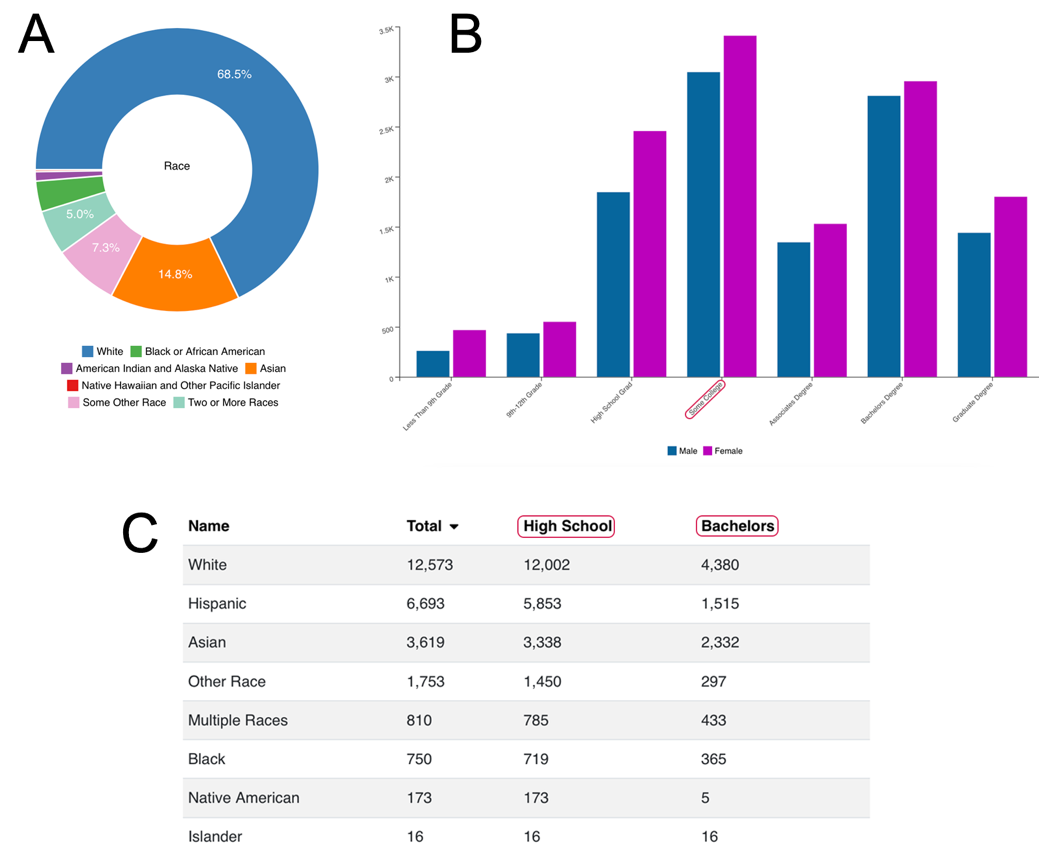Introduction
Studying the demographics of the special region where teachers will be working is important for establishing a social climate. The ultimate purpose of such research is to utilize the knowledge gained to model the extracurricular process, allowing students to discover their creative potential and establish positive links with their families. Thus, sustainable communication with the child’s parents is an example of a successful strategy of involving adults in the teachers’ process. Such a solution has several advantages, including the opportunity to share experiences, give the child a sense of safety and pride, and demonstrate the student’s skills in an environment unknown to parents. This work is focused on discussing the demographic characteristics of the city of San Dimas to apply the knowledge gained to build a respectful and positive learning environment.
Demographic Information
San Dimas is a small American town south of Los Angeles. With its unique geographical location — the city is limited on all sides by other small agglomerations, but in the North, it is neighboring the San Gabriel Mountains — the city has historically been a haven for people from different ethnic families. Thus, according to the official census, by 2018, San Dimas had 33,982 inhabitants, and since then, there has been a slight decline in population (“San Dimas,” 2020). The ethnic composition of the agglomeration is mainly composed of White (68.46%), Asian (14.84%), Black (3.37%), and other groups (Fig. 1-A). In the context of gender and age characteristics, the average age of a resident is 41.7 years, with women traditionally three years on average older than men. In general, the female population in San Dimas is larger than the male population, although both numbers — 53.13% and 46.87% — may indicate a very approximate normal distribution of the feature. The educational component of the population is of high interest since professional teachers are encouraged to work closely with the adult population. Thus, it is important to determine the average learning experience of the population. In San Dimas, according to official statistics, most people have some college education but did not receive any degree (Fig. 1-B). In general, this means that the city’s population is quite educated.

Involving the Family in the Learning Process
Without considering the importance of active family involvement in school and child care — as this requires a separate paragraph — it is important to focus on specific strategies that a teacher can use for such integration. Thus, the teacher’s task is to find the right solution that would demonstrate the positive involvement of family members in the internal school life of the child. For this purpose, it would be a good idea to organize a family event where children can bring their parents and other family members (“Parent engagement,” 2019). Examples of such meetings could be family lunches, student presentations, or school trips. During the offsite event, there is usually a stronger involvement of all parties, as the student, teacher, and parent discover new knowledge together. In addition, an important role is played by the meeting that the teacher holds for all parents to share the progress of students and show their strengths and weaknesses of learning.
Undoubtedly, a certain difficulty in organizing family events is finding a reason enough for parents to take a break and come to school. It should be understood that as a rule, most moms and dads do not attend school because they are extremely busy at work: this is a serious problem for involvement. A good strategy to address this issue would be to organize a thematic meeting on family history. As it was shown, in San Dimas, there is a fairly diverse ethnic composition, and hence one of the questions of the event could be to discuss the family archives: where they came from, who were their ancestors, and what are the traditions.
Methods of Encouragement
It is worth recognizing that most parents are interested in their child’s progress but are unable to ensure full involvement due to outside issues such as work or caring for other family members. Thus, there is a problem of conflict between a parent’s internal desire to help and their inability to participate in volunteer programs and internal school processes. The teacher can solve this difficulty if they encourage adults to participate: this approach will give them additional motivation and facilitate interaction with the teacher. In particular, early and frequent communication with parents, including through text chats, will be an effective encouragement strategy (Guest Post, 2016). Back at the beginning of the year, a parent should understand that communication with the school tutor can be interesting and useful. The teacher can and should take into account the family preferences of adults: this has the potential to increase the engagement index. Moreover, taking parents’ interests into account will help to diversify children’s learning process by creating a range of different opinions.
Conclusion
Using a blog or community in social networks has great potential for modern learning, but it is also an environment for involving families in the school. Through this format, the teacher can timely inform parents about children’s achievements, plans for future lessons, or notify them about homework (Cooper, 2018). Herein, the teacher also communicates with parents, answers their questions, advises on their children’s progress and listens to adults’ opinions and complaints. In general, such communication has a positive impact on the close integration of family and school and saves each side time.
References
Cooper, J. (2018). 4 ways to improve parent involvement at your school. Campus Suite.
Guest Post. (2016). 3 strategies to involve parents in children’s education. Teach.Com.
Parent engagement. (2019). School Webmasters.
San Dimas, California population 2020. (2020). World Population Review.